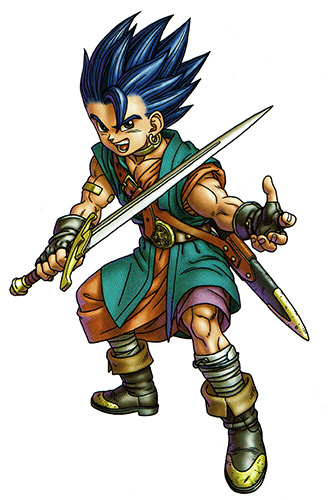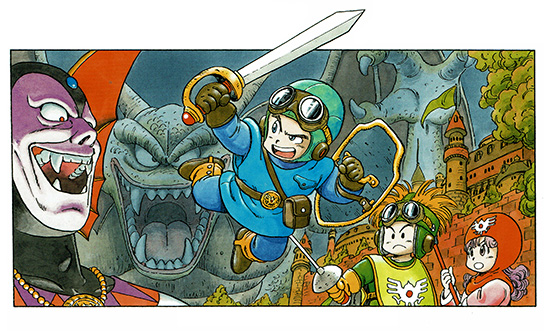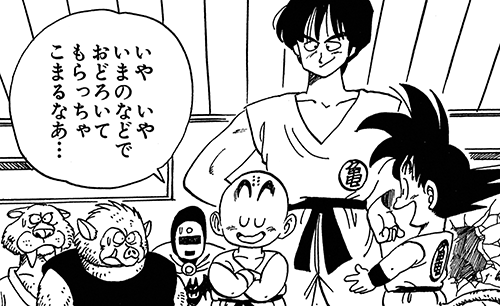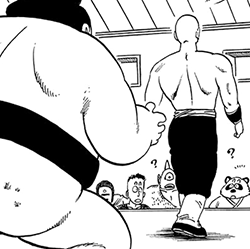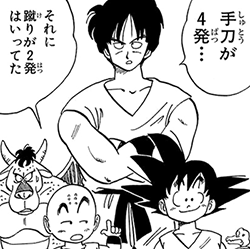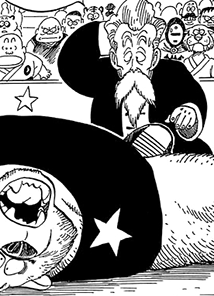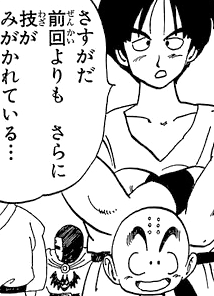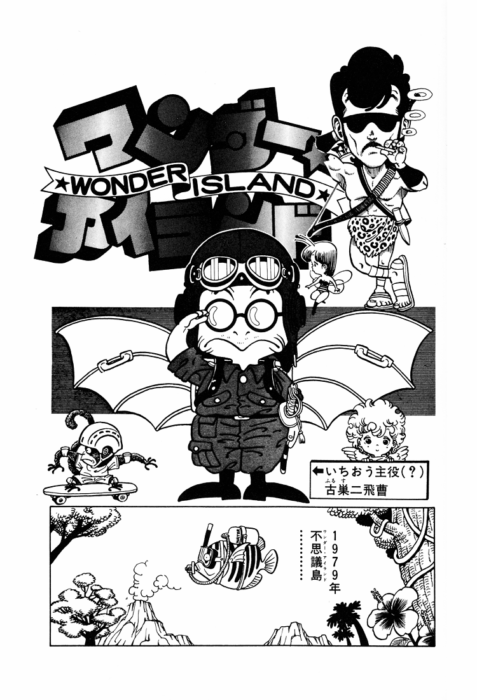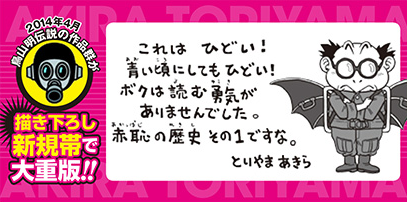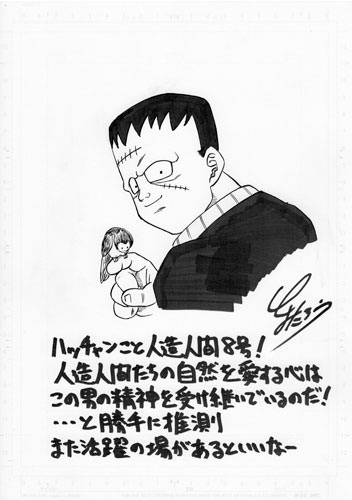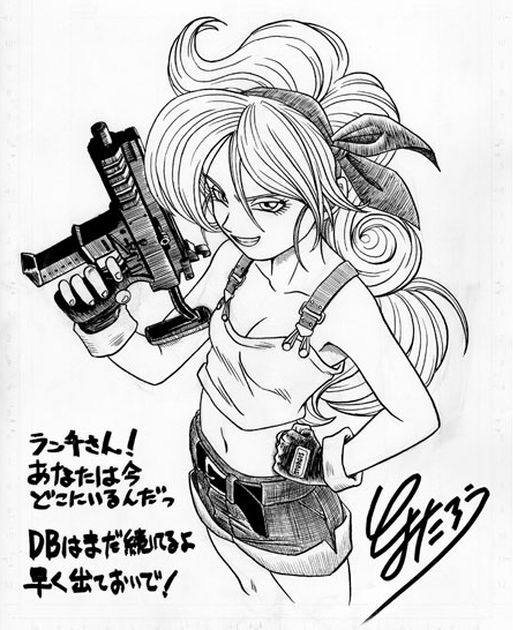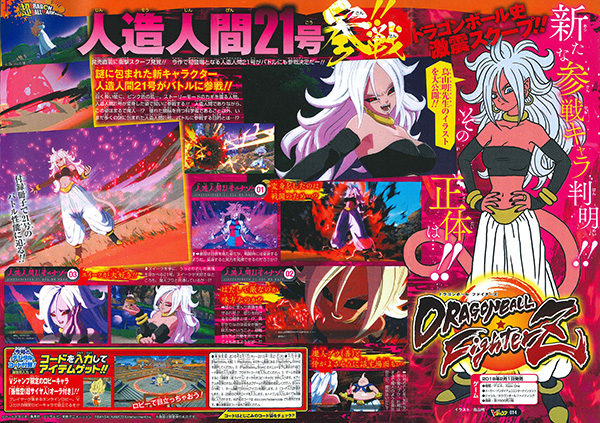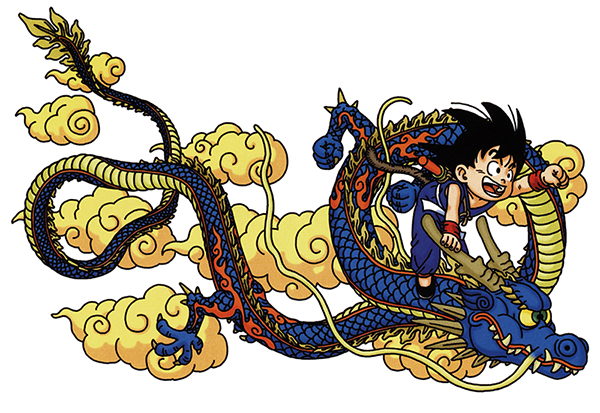The official Dragon Ball website’s twelfth entry in “The Nearly Complete Works of Akira Toriyama” — an on-going series highlighting rare and important pieces of the author’s work over the years — is the cover illustration to the first bunko volume of Jean-Henri Fabre’s “Souvenirs Entomologiques”, translated by French-literature scholar/critic Daisaburō Okumoto. The artwork features a dung beetle, which is named fun-korogashi (or “poop-roller”) in Japanese.
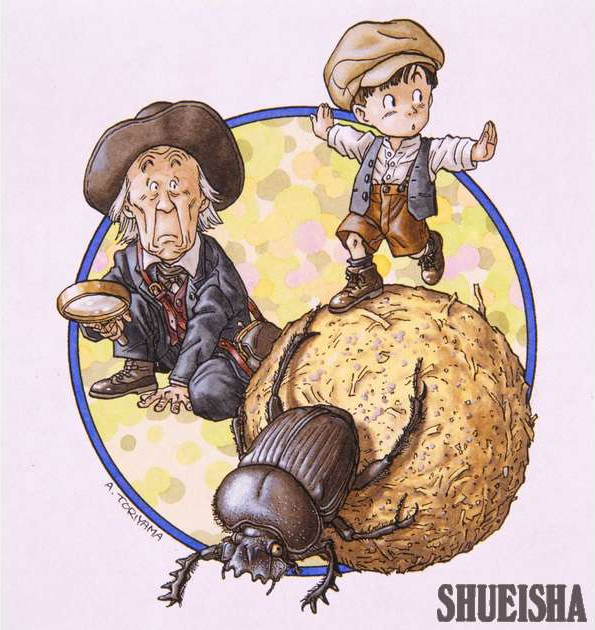
Okumoto contributed an essay — “Mechanisms, Beasts, and Reptiles” — to the “Akira Toriyama Exhibition” book series from 1993 and 1995. In it, Okumoto could not help but highlight Toriyama’s battle scenes alongside his actual topic of conversation:
In discussing the skill of Toriyama’s artistry, one cannot help but mention the intense sensation of motion and speed imparted by his battle scenes. And the thick, black delineations representing the ferocity of the explosions are incredible. It is impressive that he can create such an intense sensation of action within the boundaries of a single manga frame.
Okumoto also contributed a brief column for the sixth Daizenshuu‘s “Shenlong Times” supplemental pamphlet, conveying his entire family’s Toriyama fandom:
When I saw the color pages of Dr. Slump at the beginning of its serialization, I thought, “what beautiful artwork”. I’ve been a Toriyama fan ever since. The unexpected developments in Dragon Ball‘s story make me think, “Toriyama-sensei really is a genius”. Plus, the female characters are cute. Characters like Bulma are nice and sexy. (laughs)
Among the enemy characters, Demon King Piccolo felt fresh. I admired him—to think that villains could be done like this! Also, there’s Freeza. Even now, my daughter and I have fun imitating Freeza, with, “That one hurt!” (laughs) We watch the TV anime every week, too; the whole family are Dragon Ball fans.
The end of the column includes a message from Shueisha advertising Okumoto’s then-forthcoming translation of “Souvenirs Entomologiques” — indeed, with a new cover illustration from Akira Toriyama — due out in March 1996.
